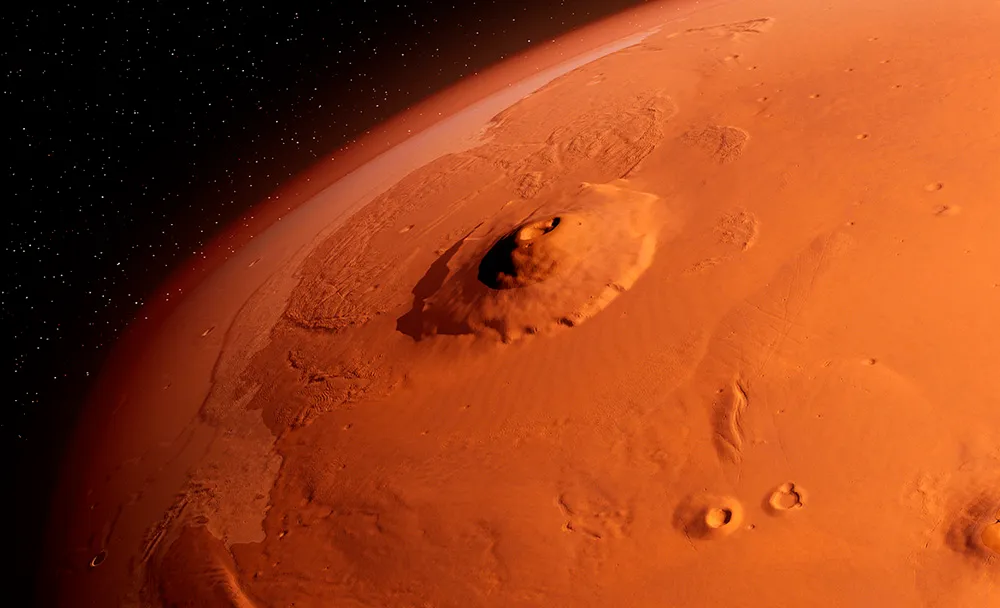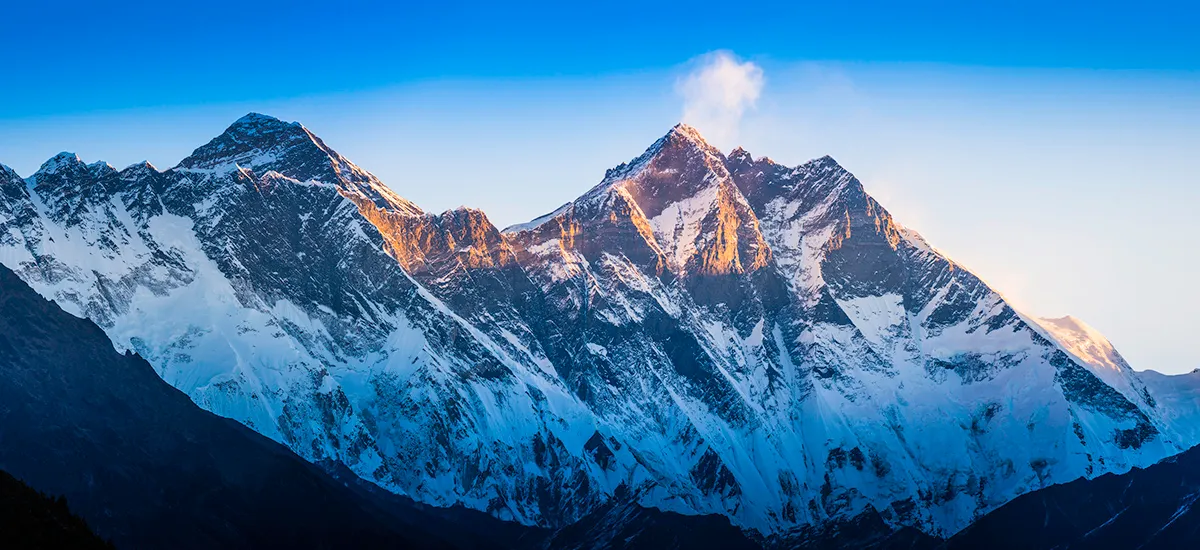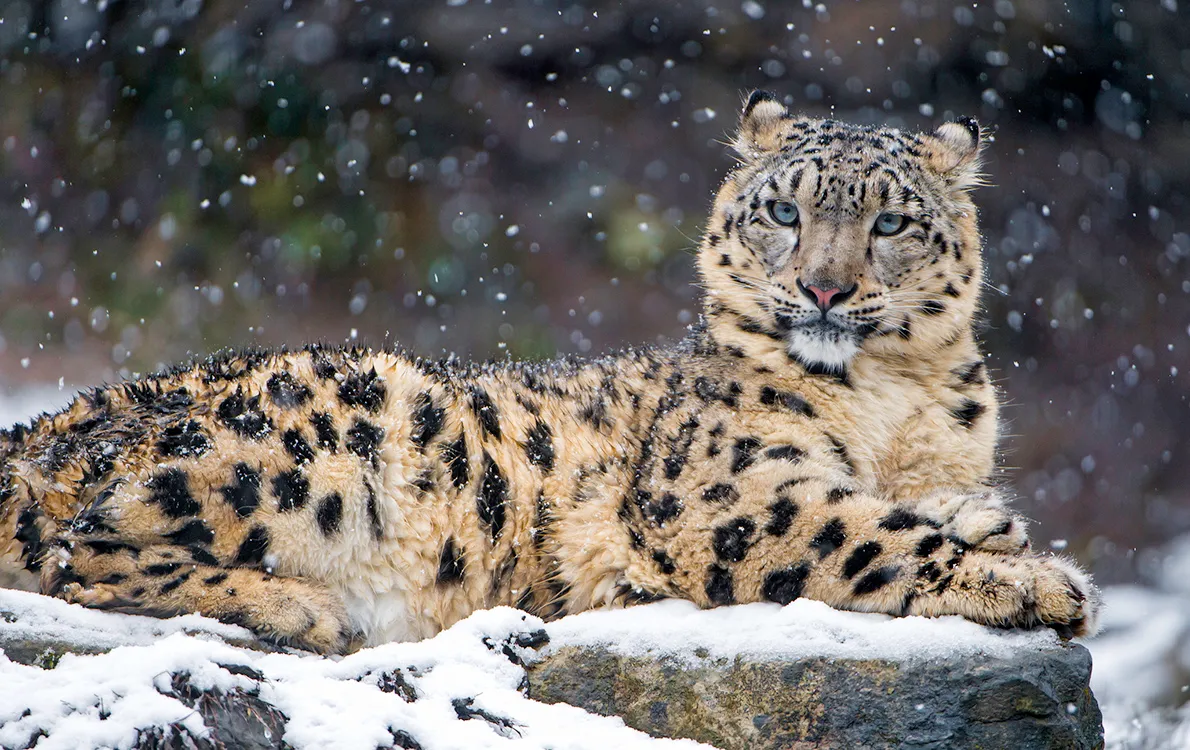How do mountains form?
Most mountains owe their existence to the movement of tectonic plates, vast sections of the Earth’s crust. Where two tectonic plates converge, they buckle and fold, resulting in the most common type: fold mountains.
The Himalayas, for example, result from the Asian and Indian plates slowly colliding. Block mountains are created when the pressures between plates allow cracks (faults) to appear, with huge slabs of rock being thrust upwards.
Volcanic activity can also produce mountains. As a volcano erupts, the buildup of molten rock can form peaks. Sometimes, the rising magma can remain trapped underground, causing the surface to swell in a dome shape.
With tectonic plates typically moving just three to five centimetres per year, mountains slowly take shape over tens or hundreds of millions of years. The oldest mountain range in the world is the Barberton Greenstone Belt in South Africa, with some mountains estimated at 3.5 billion years old.

What’s the biggest mountain in the Solar System?
Mars’s Olympus Mons is often described as the highest mountain in the Solar System. One of many volcanoes on the Red Planet, it towers over its neighbours at 21.2km above the Martian equivalent of ‘sea level’, making it about two and a half times as tall as Earth’s Mount Everest (8.8km). However, an unnamed mountain peak comes a strong second. Situated at the centre of a huge crater on the asteroid Vesta, it has a height of at least 20km. Its size is even more impressive when you consider that Vesta’s diameter is only 530km.
Determining a clear winner is challenging, partly because of the difficulties in establishing a reference height equivalent to sea level on Earth. For example, ‘zero altitude’, the equivalent of sea level on Mars, is often measured as the height in which temperature and atmospheric pressure would allow water to exist simultaneously in all three states: solid, liquid and gas.
Are mountains getting taller?
Many mountain ranges are still growing under the continuing shift of tectonic plates. These include the Himalayas, which increase in height an average of 5mm per year. However, after an earthquake struck Nepal in 2015, some of its peaks shrank up to a metre.
In other regions, tectonic movement has slowed or ceased, such as the tectonic plates that produced the USA’s Appalachian mountains, which are no longer converging. Instead, for the last 200 million years, weather erosion has been the main force shaping these mountains.
Other processes can also cause a mountain’s height to change. Well, at least appear to change. Altitude is measured relative to the mean sea level in the local area – so the exact height depends on which local area is chosen as a reference point.
While early measurements relied entirely on trigonometric calculations, nowadays these are assisted by GPS or gravitometers to evaluate altitude more precisely.

How dangerous is it to climb Everest?
Over 300 people are known to have died scaling Everest since 1922. Injuries and bad weather can be deadly in this remote environment, and our bodies have not evolved to cope with low oxygen levels at high altitude. Altitude sickness can lead to fatal pulmonary or cerebral oedemas, which occur when the lack of oxygen results in leakage of fluid into the lungs or brain.
To avoid this, mountaineers acclimatise in stages, allowing their bodies to adjust gradually. Above 8,000 metres, climbers enter ‘the death zone’ where the air pressure is so low that humans cannot survive for long periods without supplementary oxygen.
In 2019, high winds left just a few suitable days for climbers to attempt Everest’s summit. Many were forced to wait their turn at punishingly high altitudes, amplifying the effects of exhaustion and altitude sickness. This led to one of the mountain’s deadliest years ever, with 11 reported fatalities.

What animals live on mountains?
With scarce oxygen, high winds, freezing temperatures and strong sunshine, mountains are a hostile environment. Yet many animal species have adapted to make mountain peaks their home, evolving red blood cells that can absorb more oxygen.
One of the most famous mountain residents is the snow leopard, which lives at altitudes of 3,000 to 5,000 metres in central Asia. Its prey include various species of mountain goats and pikas (tiny members of the rabbit family who are thought to be the highest dwelling mammals on Earth, sometimes found at altitudes surpassing 6,000 metres).
Spotted at up to 7,000 metres, bar-headed geese fly over the Himalayas during their annual migration. Flying in such a thin atmosphere is difficult, but these large-lunged birds fly at night when the air is colder and denser.
Around 12 per cent of humans live in such habitats, and some people have also evolved to live at altitude – most Tibetans possess a genetic mutation that prevents their bodies from over-reacting to low oxygen levels.
Read more:
- Top 10: Tallest mountains in the Solar System
- Do rising sea levels mean mountain elevations will need to be adjusted?
- Why is it colder at the top of a mountain, if you’re closer to the Sun?
- What is the highest mountain on the ocean bed?
To submit your questions email us at questions@sciencefocus.com (don't forget to include your name and location)